
This story appears on the cover of the Oct. 13, 2014, Asia edition of TIME.
The typhoons that lash Hong Kong make quick work of umbrellas, the squalls twisting them into Calder sculptures of disarranged fabric and metal. On the evening of Sept. 28, prime typhoon season in this South China Sea outpost, flocks of umbrellas unfurled on the streets of Hong Kong. This time, they guarded not against rain and wind but tear gas and pepper spray. One of the world’s safest and most orderly cities — a metropolis of 7.2 million people that experienced just 14 homicides in the first half of this year — erupted into a battleground, as gas-mask-clad riot police unleashed noxious chemicals on thousands of protesters who were demanding democratic commitments from the territory’s overlords in Beijing.
As the first rounds of tear gas exploded in Admiralty, a Hong Kong district better known for its soaring bank buildings and glittering malls, demonstrators armed with nothing but umbrellas and other makeshift defenses — raincoats, lab glasses, ski goggles, milk and plastic wrap — defied the fumes and surged forward. The protests, drawing tens of thousands of people from all walks of life, were galvanized by mounting anger over Beijing’s decision in late August to deny locals the right to freely elect Hong Kong’s top leader, known as the chief executive (CE), in 2017.
When the onetime British colony was reunified with China in 1997, Hong Kong was promised governance under a “one country, two systems” principle that guaranteed significant autonomy for 50 years. But residents fear that, just 17 years after the handover, the freedoms that differentiate Hong Kong from everywhere else in China are eroding. Shocked by the volleys of pepper spray and tear gas, which injured dozens, the protest movement was energized by desperation. “We are not afraid of the Chinese government,” said Kusa Yeung, a 24-year-old copywriter helping to distribute water to fellow protesters just past midnight on Sept. 29. “We are fighting for a fair democracy.” The Umbrella Revolution had unfolded.
Hong Kong’s civil-disobedience campaign — which began Sept. 28 as the Occupy Central With Love & Peace movement, after the Central city district where it originated — soon occupied the city’s downtown, along with two key shopping and tourist districts. But while the sit-ins, with their umbrellas and yellow ribbons, captured the world’s attention, they will not topple China’s ruling Communist Party. The People’s Republic celebrated its 65th year of existence on Oct. 1 with a blaze of fireworks and militaristic pageantry in Beijing, a symbol of the party’s unquestioned grip on the country — though the fireworks were canceled in Hong Kong.
Still, the protests engulfing this tiny splinter of the motherland present China’s strongman President Xi Jinping with an unexpected dilemma at a time when the party is already facing scattered discontent at home. The side effects of three decades of unfettered economic growth — a poisoned environment, a growing income gap, rampant corruption — have contributed to an uneasy sense that, for all of China’s remarkable rise, things are not quite as they should be. “The Hong Kong protests are the last thing Xi Jinping wanted to see,” says Jean-Pierre Cabestan, a political scientist at Hong Kong Baptist University. “He has so many other problems to tackle.”
A canny nationalist, Xi and his coterie regularly blame “foreign forces” for fomenting social disorder in China. A scathing Sept. 29 online opinion piece in the People’s Daily, the Chinese Communist Party’s mouthpiece, accused the Hong Kong protests of being orchestrated by “anti-China forces … whose hearts belong to colonial rule and who are besotted with ‘Western democracy.’” But, if anything, the mess in Hong Kong, along with other instances of social unrest, are self-inflicted by China’s centralized leadership, which has done little to win hearts and minds on the country’s periphery. In his National Day speech in Beijing, Xi proclaimed that China’s leaders “must never separate ourselves from the people.” Yet, at the same time, the authorities detained mainland activists who expressed solidarity with the Hong Kong protesters.
Instead of taking advantage of Hong Kong’s inherently pragmatic temperament, the Chinese government spent the summer rubbing the territory’s nose in its political powerlessness. First came a Beijing white paper that asserted the central government’s “comprehensive jurisdiction” over Hong Kong and trod on treasured local institutions like rule of law. Then on Aug. 31 the Chinese government ruled that Hong Kongers could vote for their CE — but only after a Beijing-backed committee presented the electorate with two or three candidates it deemed suitable. (Currently, an electoral college selects the CE.) “Rejecting democracy in Hong Kong has dramatically backfired,” says Maya Wang, a Hong Kong–based researcher with Human Rights Watch. “People here have now lost confidence in the central government. Trying to clear the protests has just led to bigger protests.” Even if the demonstrators eventually disperse, this breach of trust fundamentally changes Hong Kong’s political calculus.
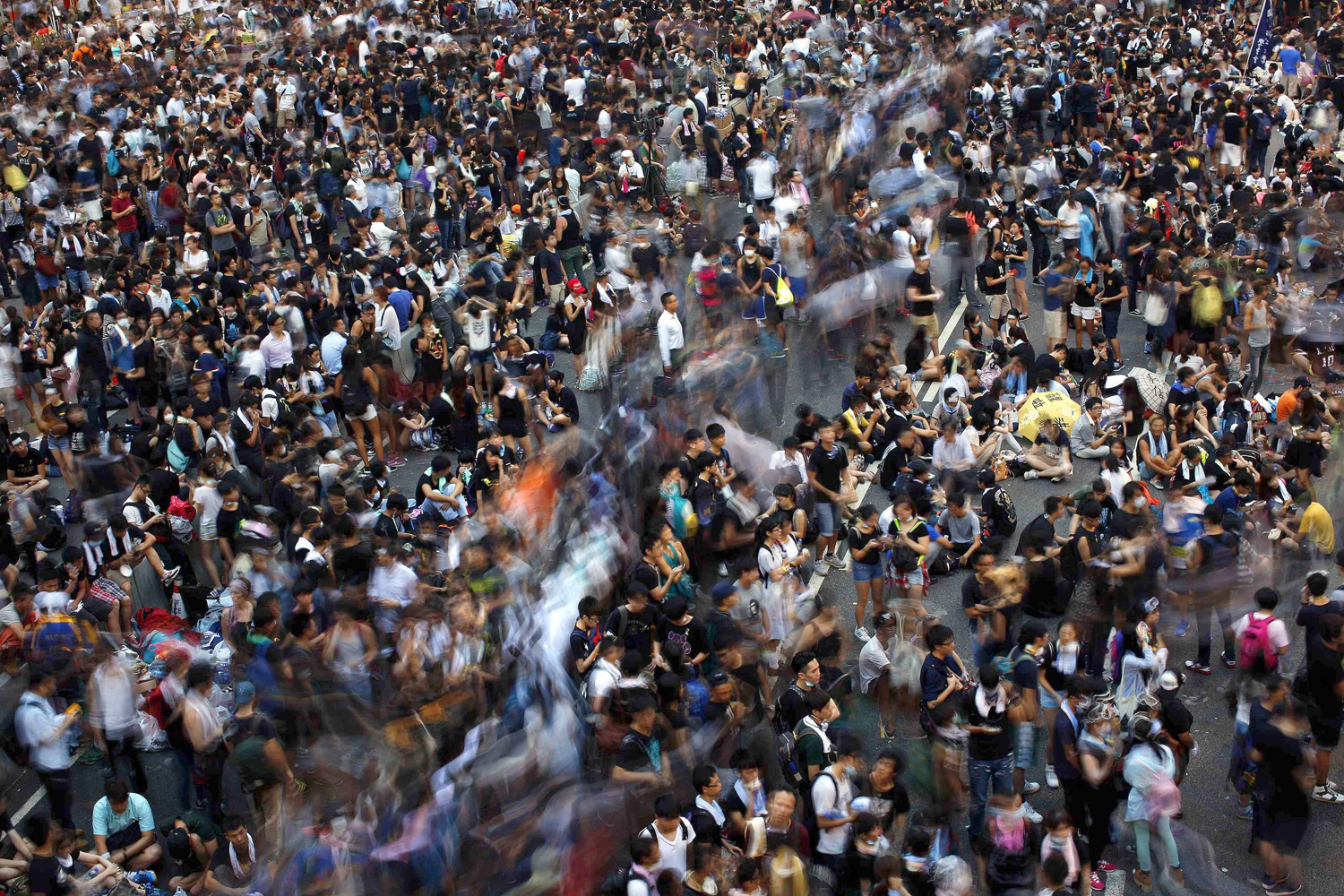
The Umbrella Revolution
If the other democratic upheavals of recent years are defined by a single season or hue, the choice of an umbrella to symbolize Hong Kong’s dissent is as fitting as it is improbable. Umbrellas come in a riot of colors, matching a polyglot city that was birthed by quarreling Eastern and Western parents, neither of which gave much thought to gifting democracy to a few hunks of South China Sea rock.
Umbrellas are also a practical instrument, unsexy but vital, much like this financial hub that has long served as an entrepôt to the vast markets of mainland China. Efficiency is the city’s motto. This being Hong Kong, the protesters picked up their trash after the tear gas subsided. The volunteers who ferried in donated supplies even had sparkling water on tap, offering San Pellegrino to the parched hordes at nearly 3 a.m. on Sept. 29.
Neither the lingering memory of tear gas nor the advent of the workweek in this workaholic city diminished the crowds on Monday and Tuesday. As riot police withdrew amid a barrage of criticism for their tear-gas blitzkriegs, protesters further packed what are already some of the most densely populated places on earth, young families staking out spaces with bright parasols. William Ma, 47, brought his daughter Dorothy, 11, to one protest site on Sept. 30. “When I was young, democracy never came,” he said. “Maybe I’ll have died already, but she can have a better life, she can have democracy.”
The weekend’s anxious mood was replaced by a carnival gaiety, as stockbrokers mixed with the students who had helped kick-start the protest movement. High school kids did their homework on the pavement, squinting at their scientific calculators in the scorching sun. Some of the demonstrators admitted they were newbies, galvanized into political action by the heavy-handed police response. “[People] were just raising their hands without any weapons, and they used tear gas without any warning,” said Raymond Chan, a math teacher, who joined the movement on Monday. “But the fact that they did that just makes us stronger, more unified.”
Such a movement in Hong Kong threatens the national unity Xi and Co. are so keen to maintain. For all of Beijing’s emphasis on enhancing national security — the surveillance apparatus gets more official funding than does the military — China’s fringes are fraying. Beyond Hong Kong, the vast ethnic enclaves of Tibet and Xinjiang are rebelling, with violence in the latter largely Islamic region claiming hundreds of lives over the past year. Taiwan, the island that Beijing has desperately wanted back ever since Chiang Kai-shek’s Nationalists fled there after losing the civil war in 1949, has been assimilating economically with the mainland. But the Hong Kong crisis has spooked even ardent integrationists in Taiwan, making it hard for Xi to argue that “one country, two systems” can bring the island back into the fold. Even activists in tiny Macau, the former Portuguese outpost that slid back into Beijing’s embrace in 1999 even more eagerly than Hong Kong had two years before it, are demanding more latitude in choosing their local leader.
Hong Kong’s cry for freedom resonates far beyond its 400 sq miles (1,035 sq km); it directly challenges the narrative of a unified People’s Republic. “The truth is Hong Kong is more than ready for democracy,” wrote Anson Chan, Hong Kong’s former chief secretary, the No. 2 leadership post in the territory, in an exclusive commentary for TIME. “It is China that is not ready for a democratically governed Hong Kong it fears it cannot totally control.”
Photographs of Hong Kong’s Umbrella Revolution
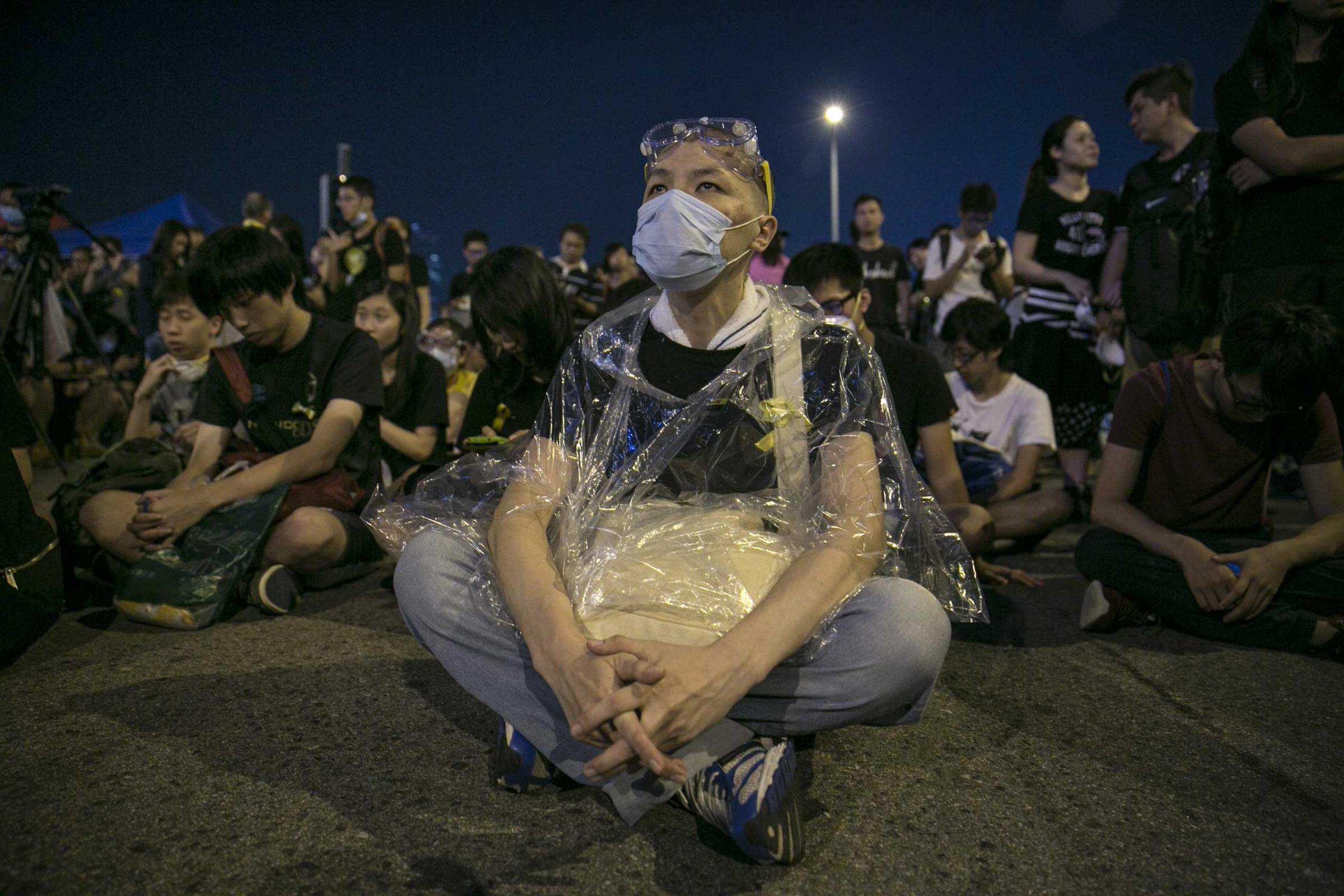

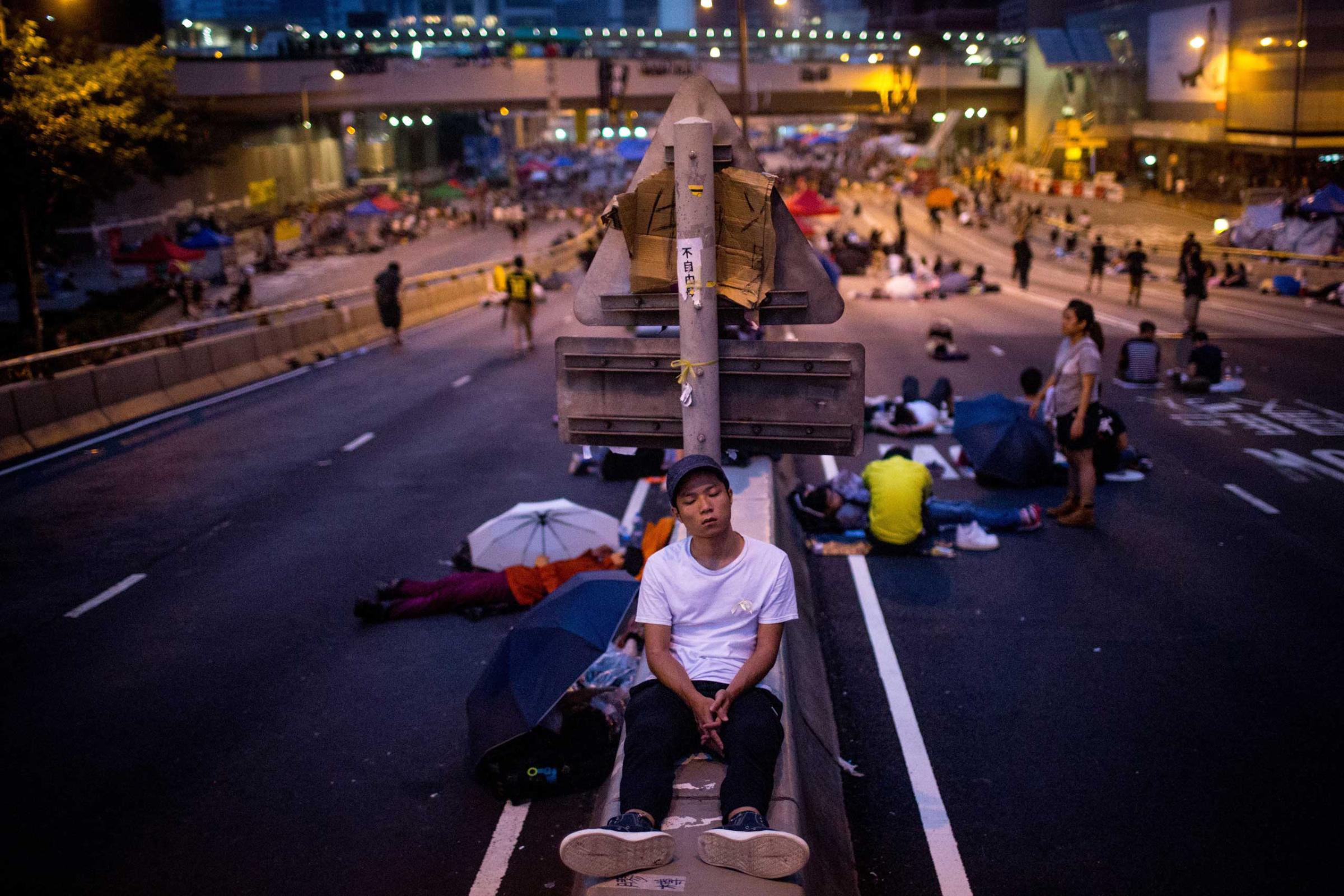



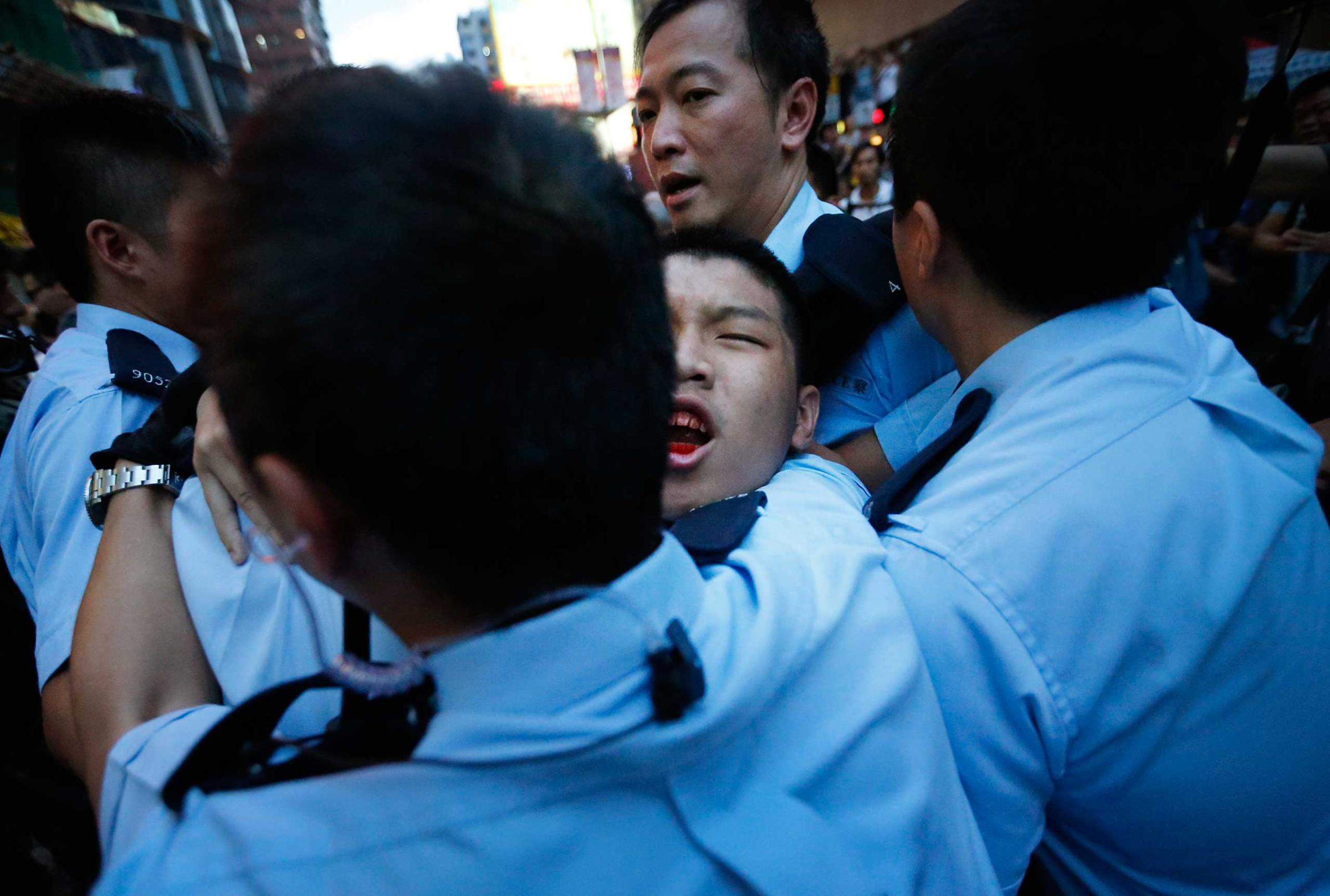
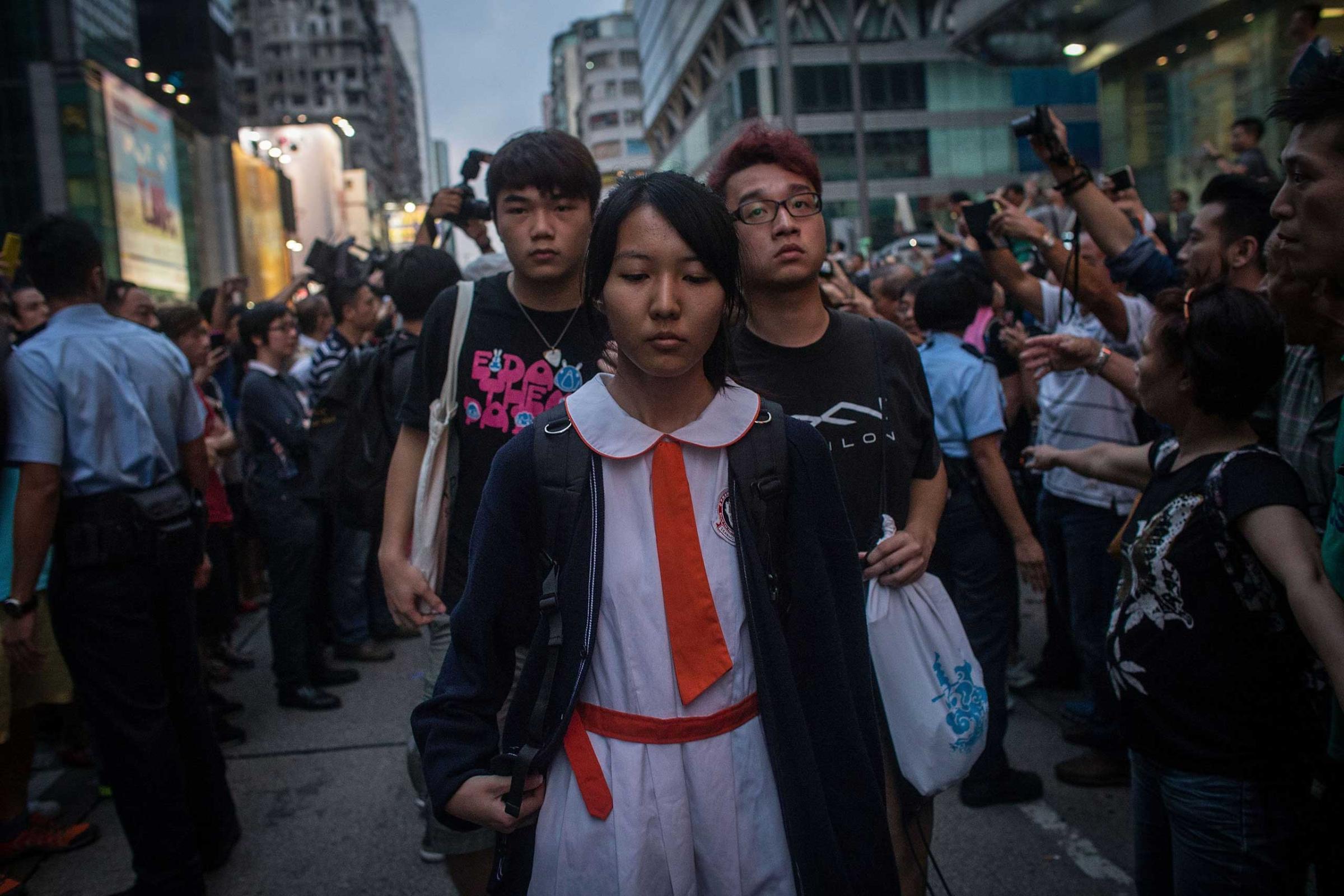


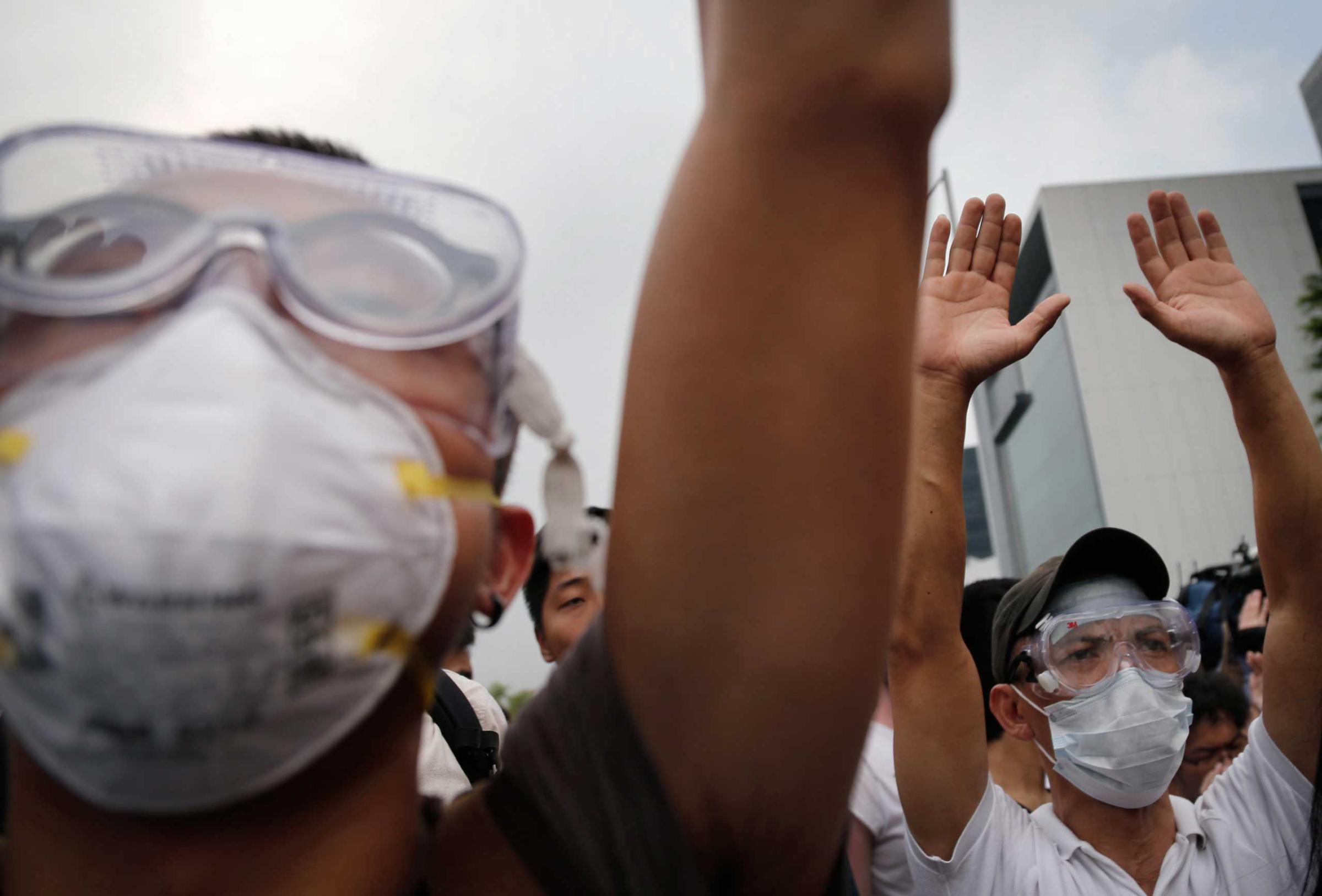

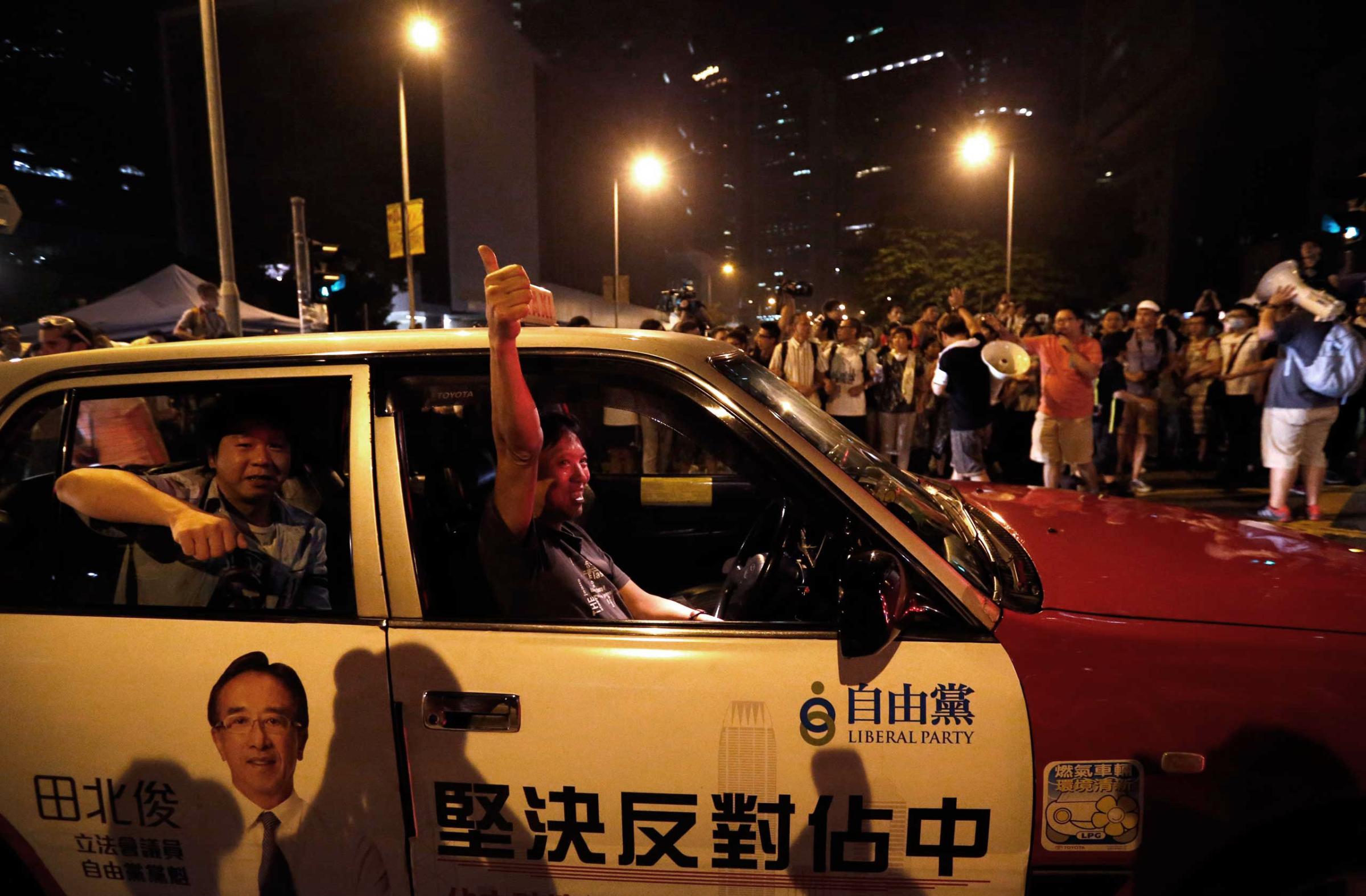

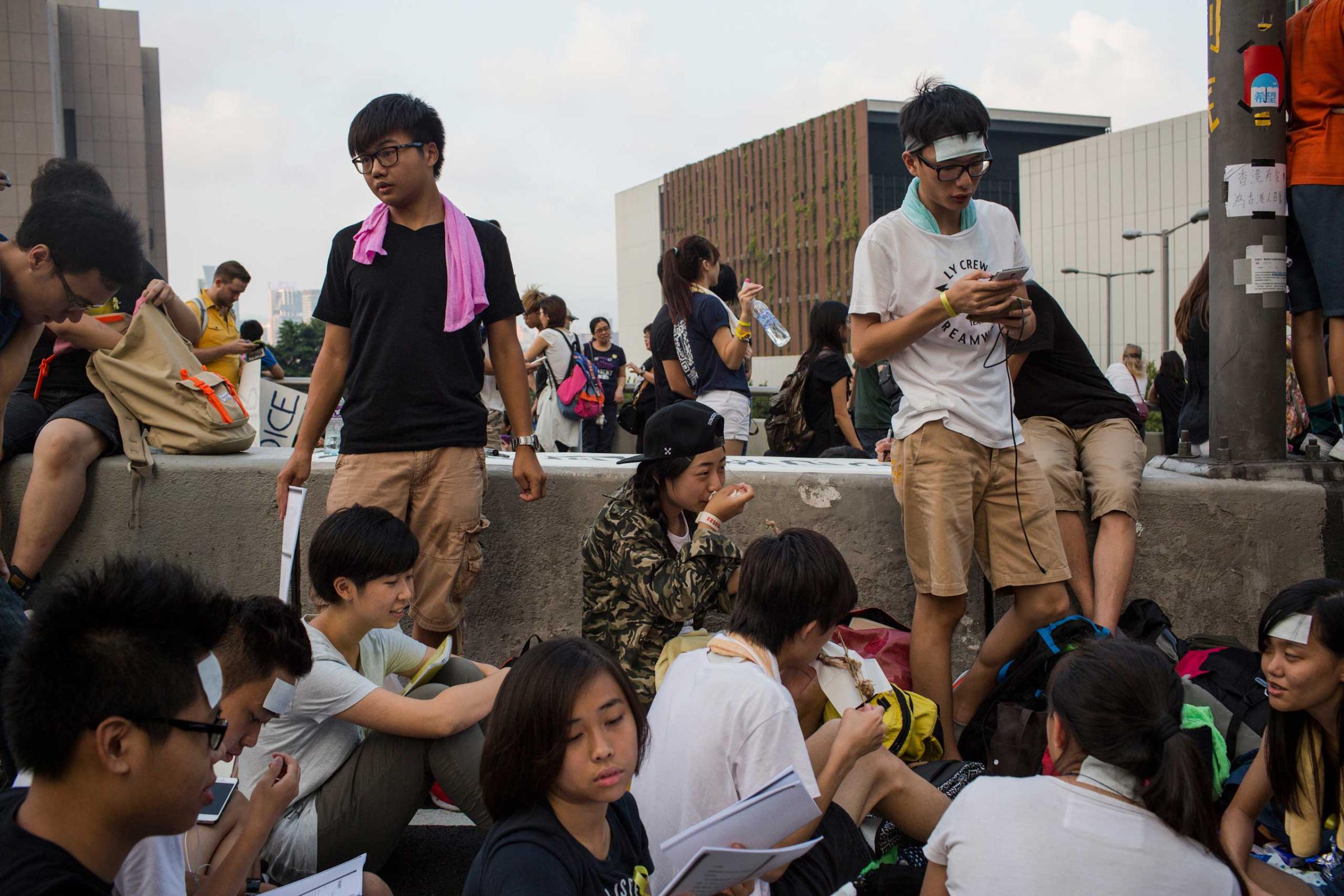

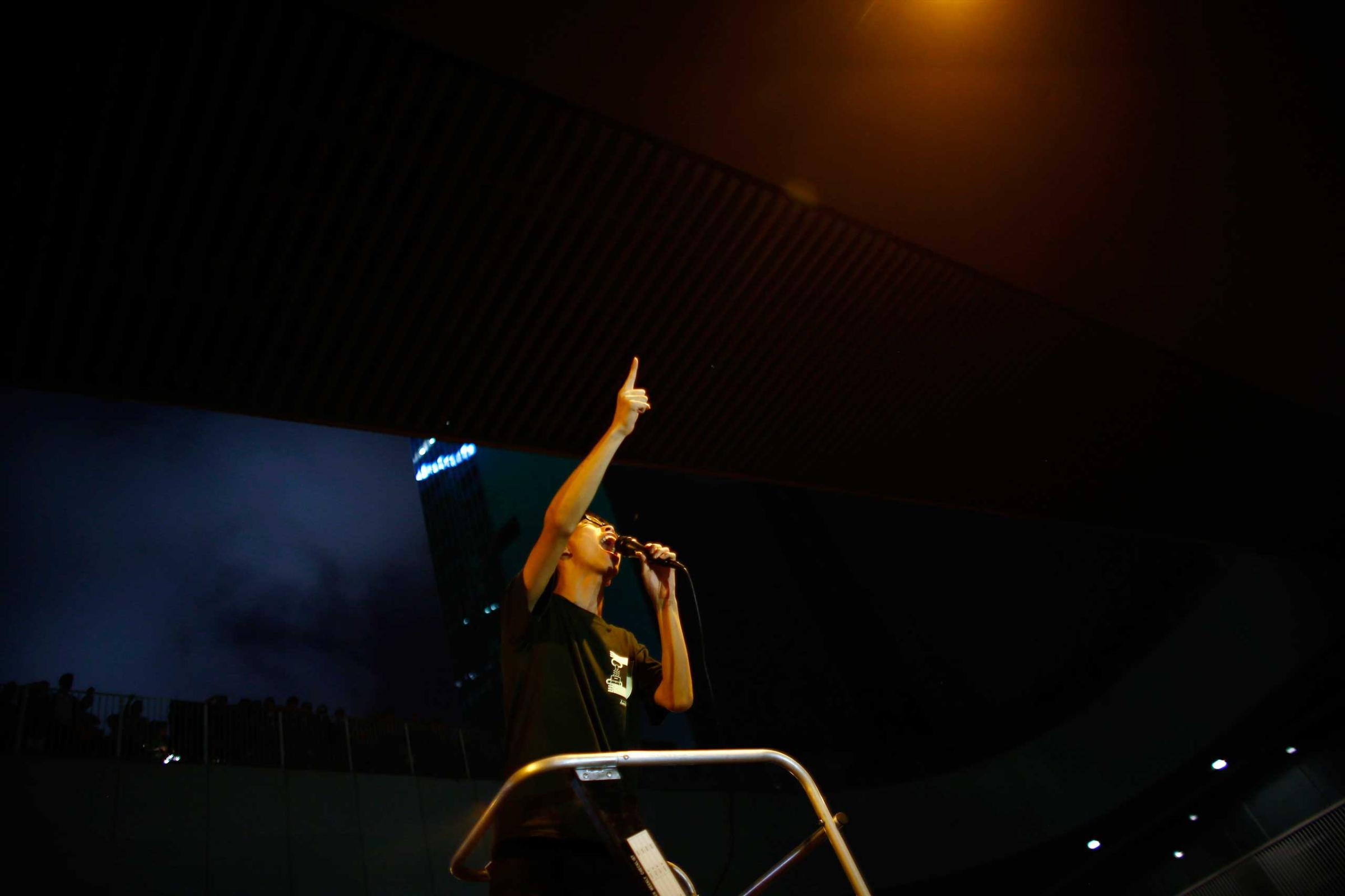
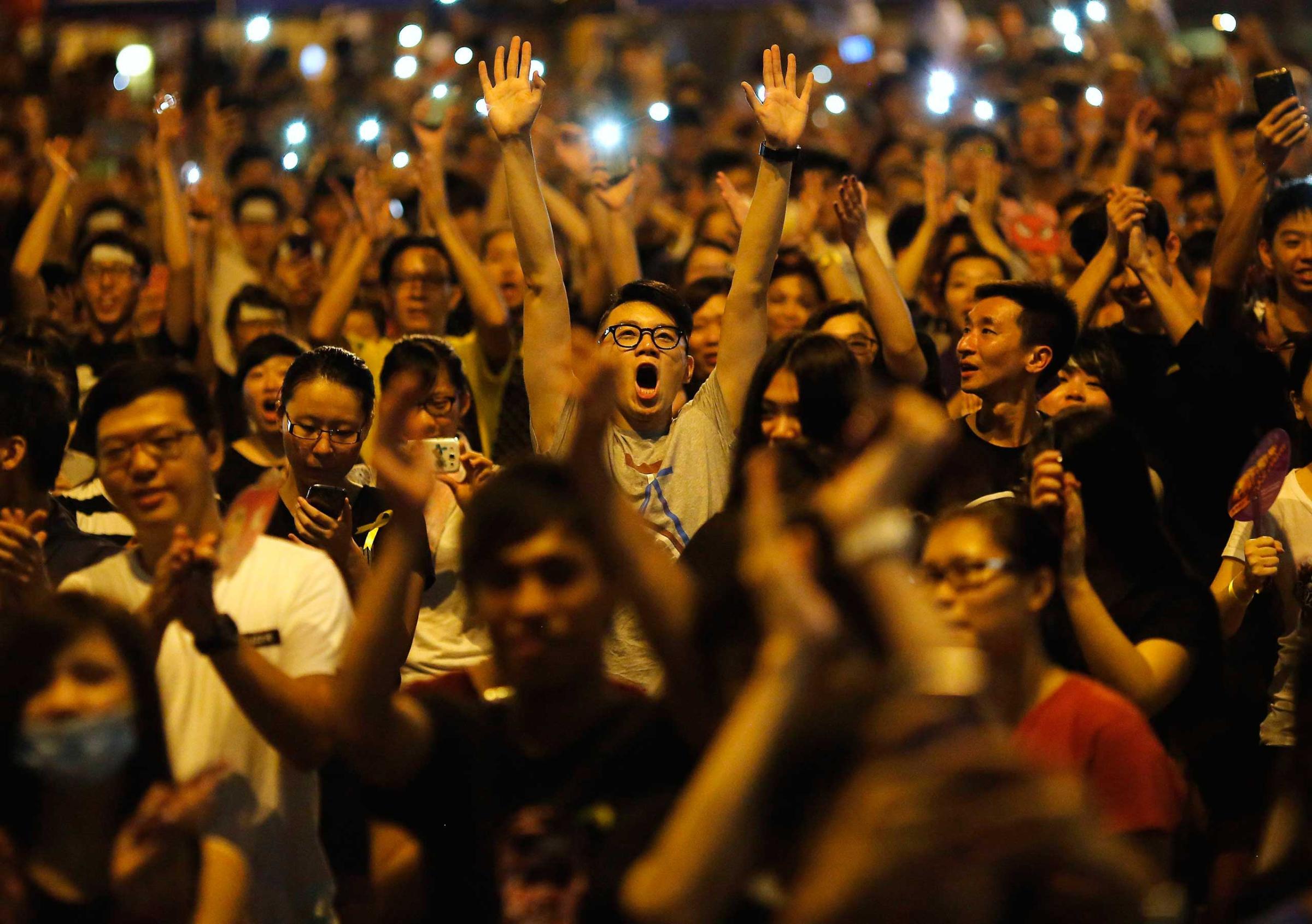

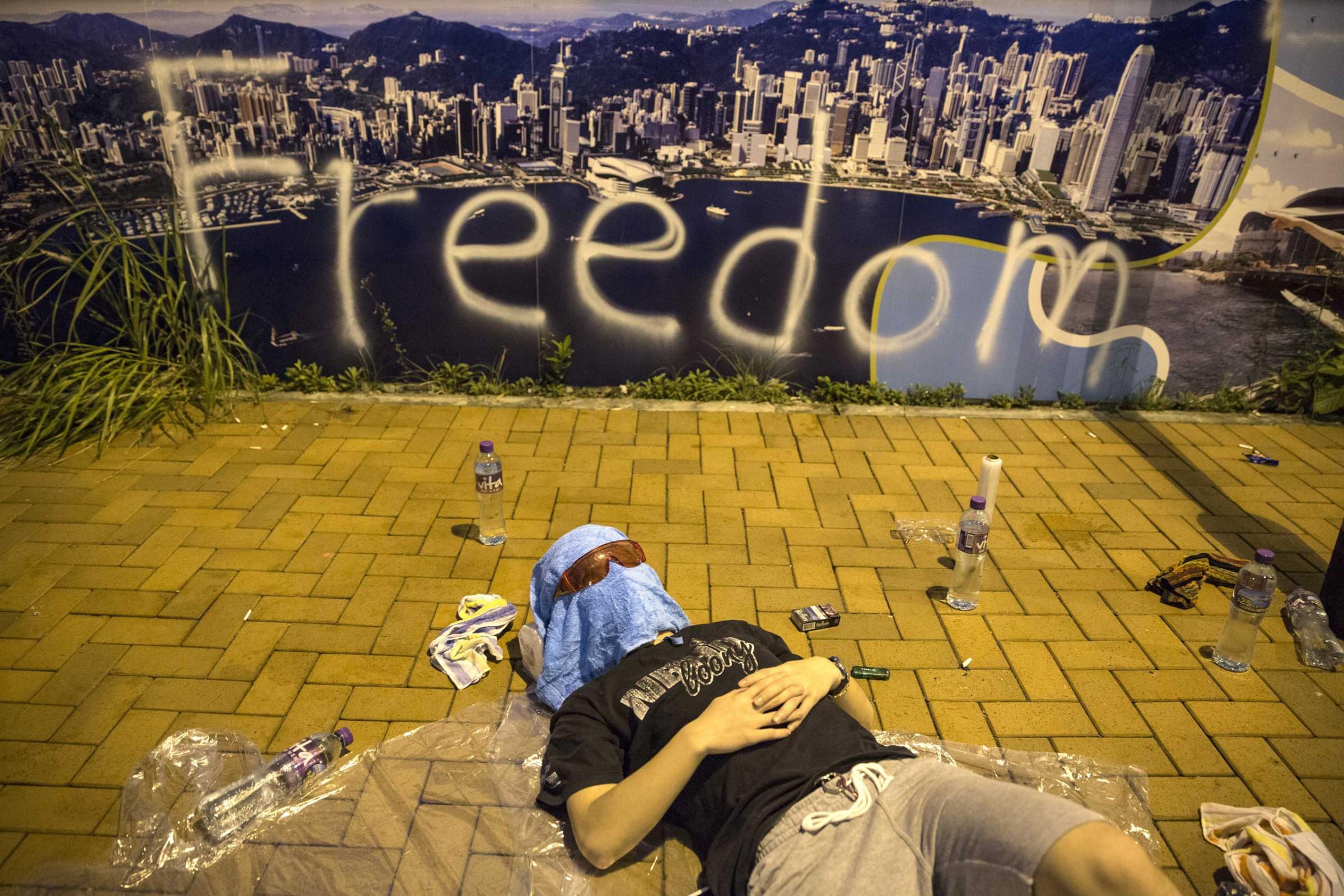
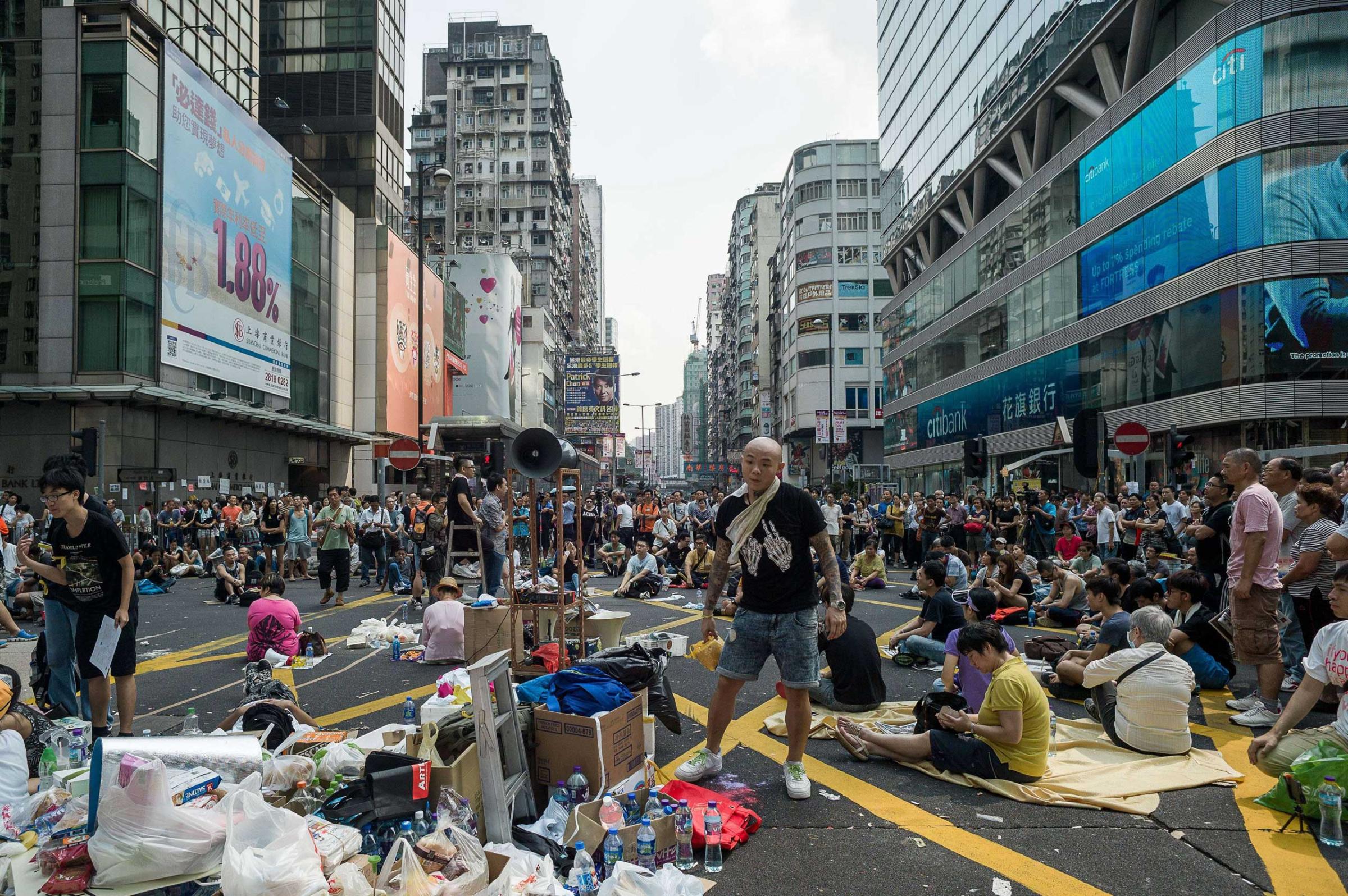

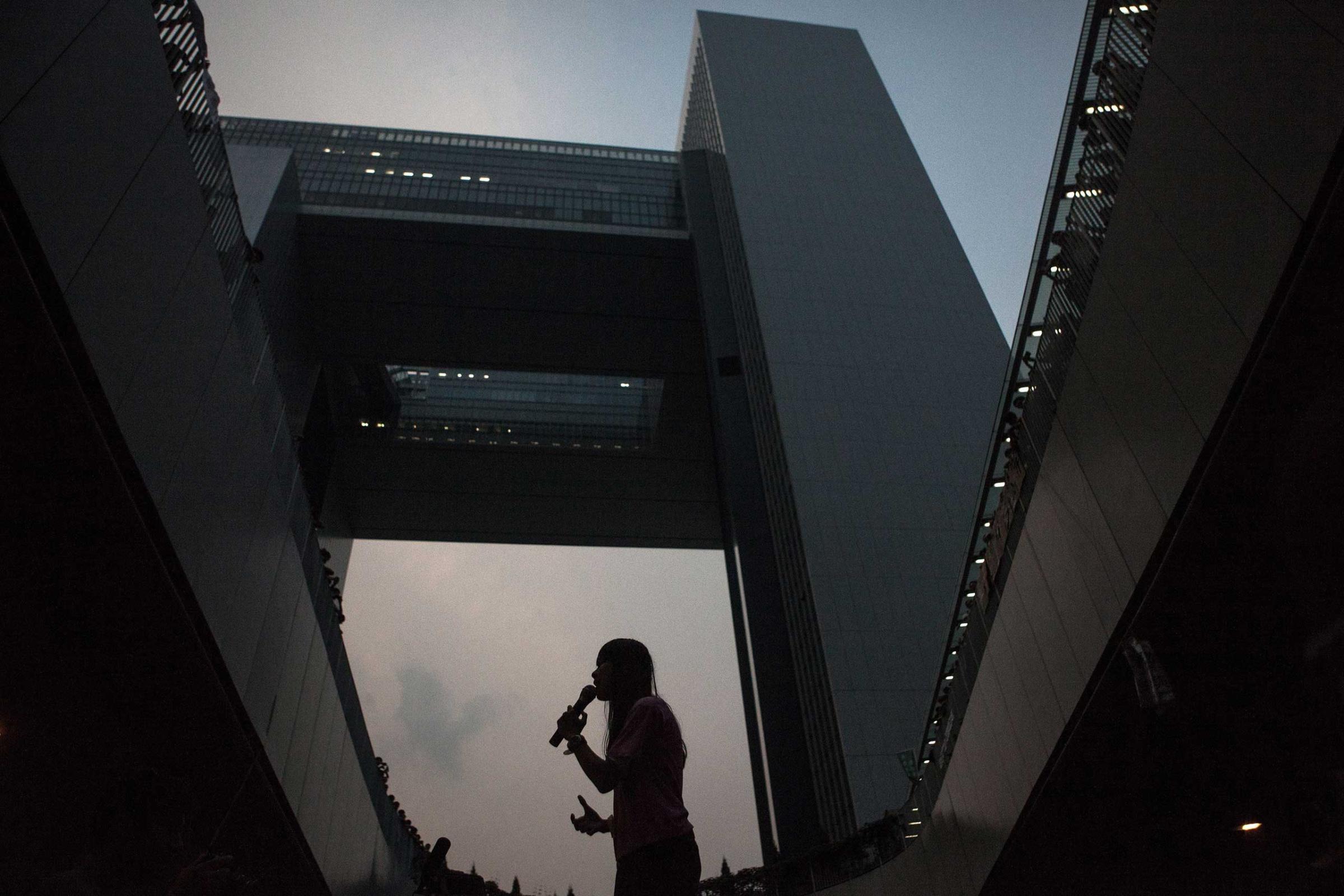

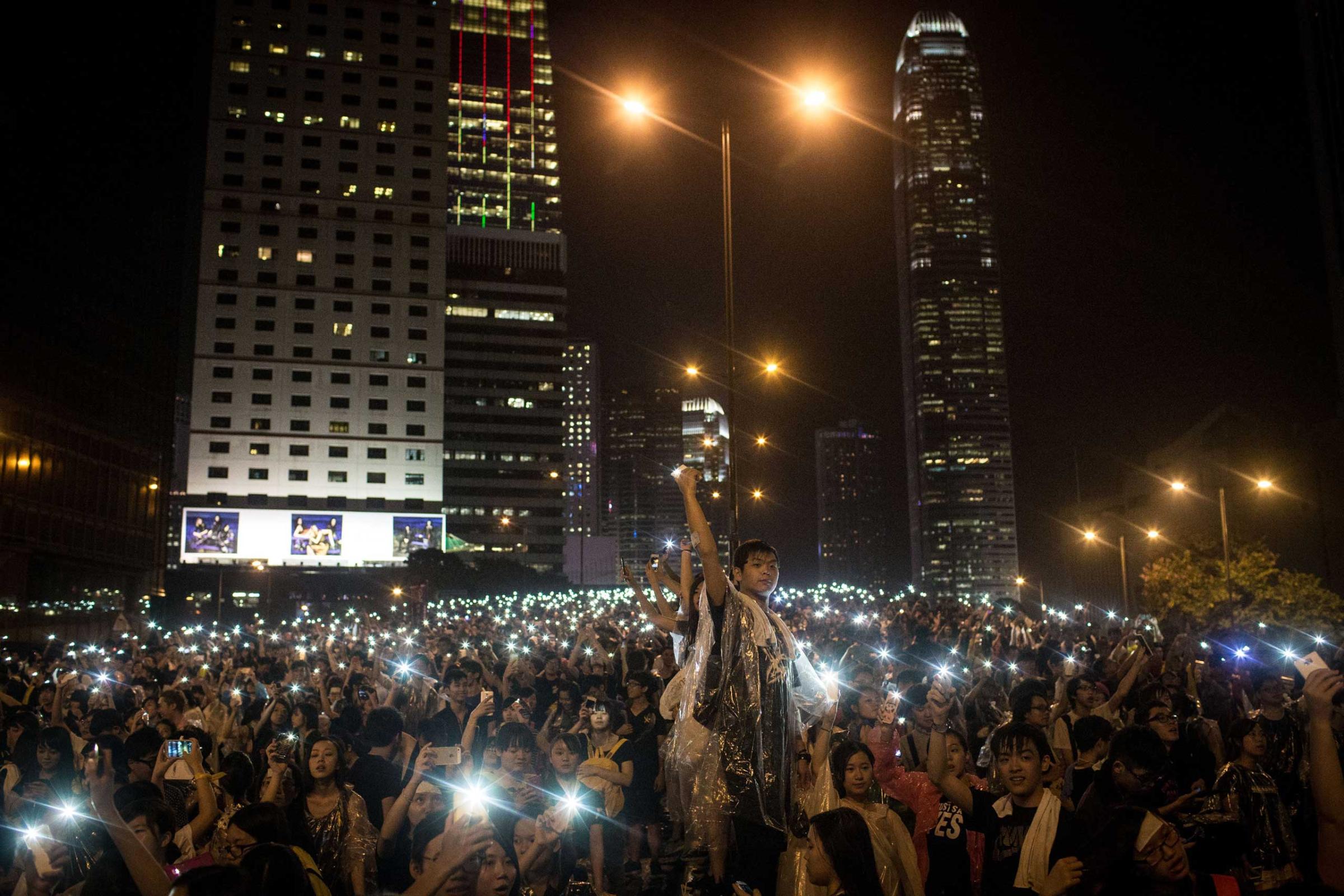


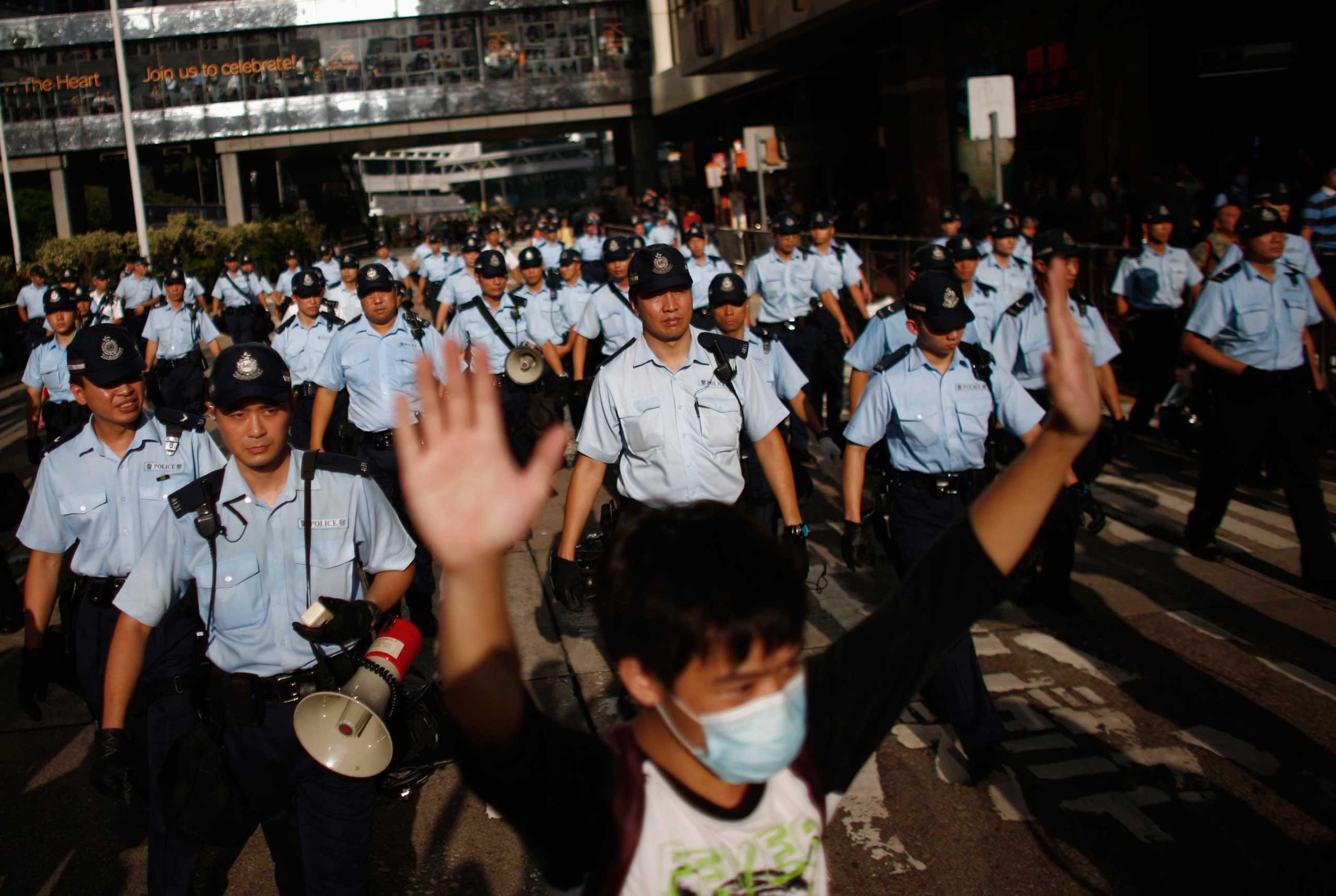
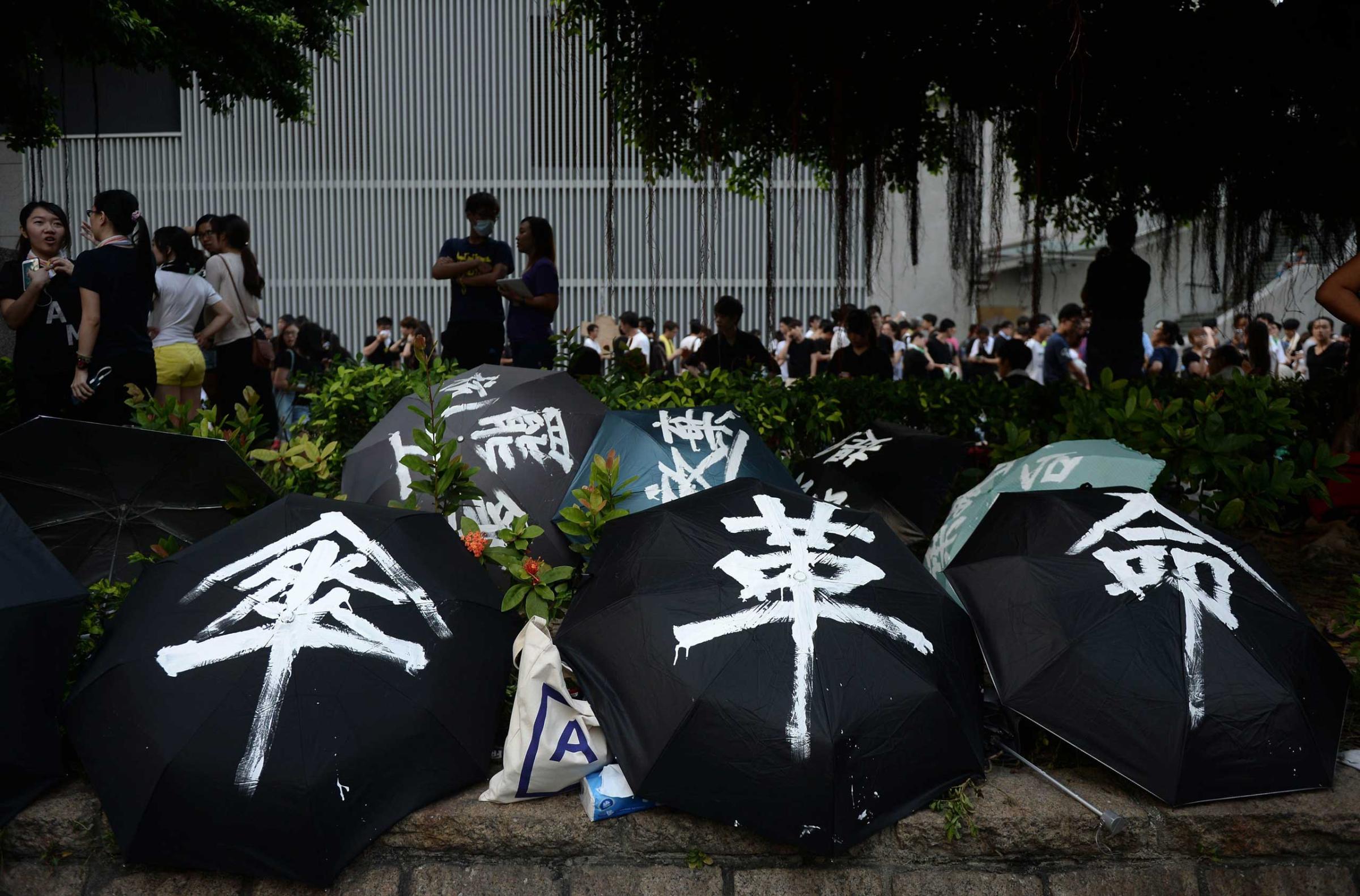

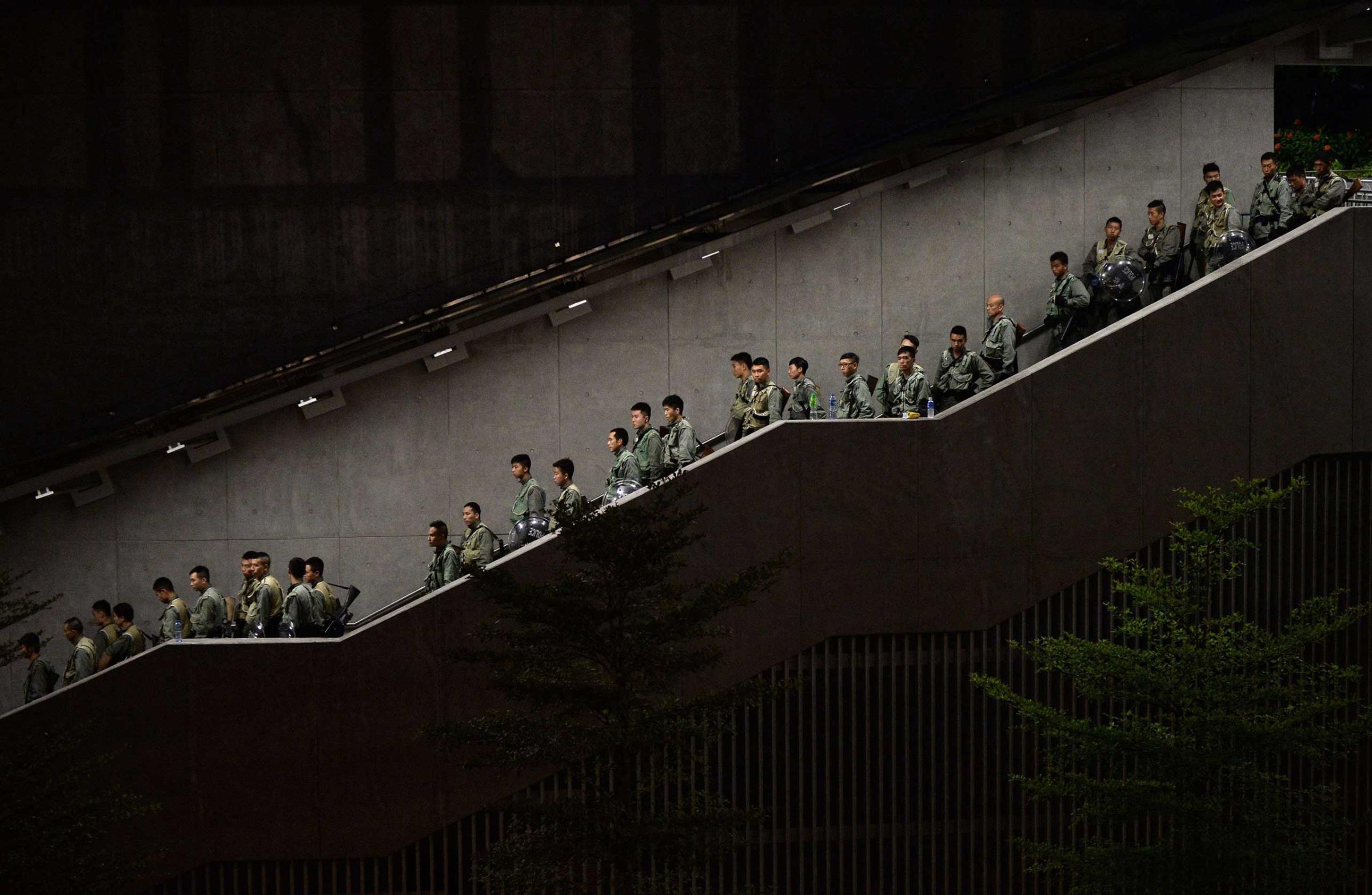
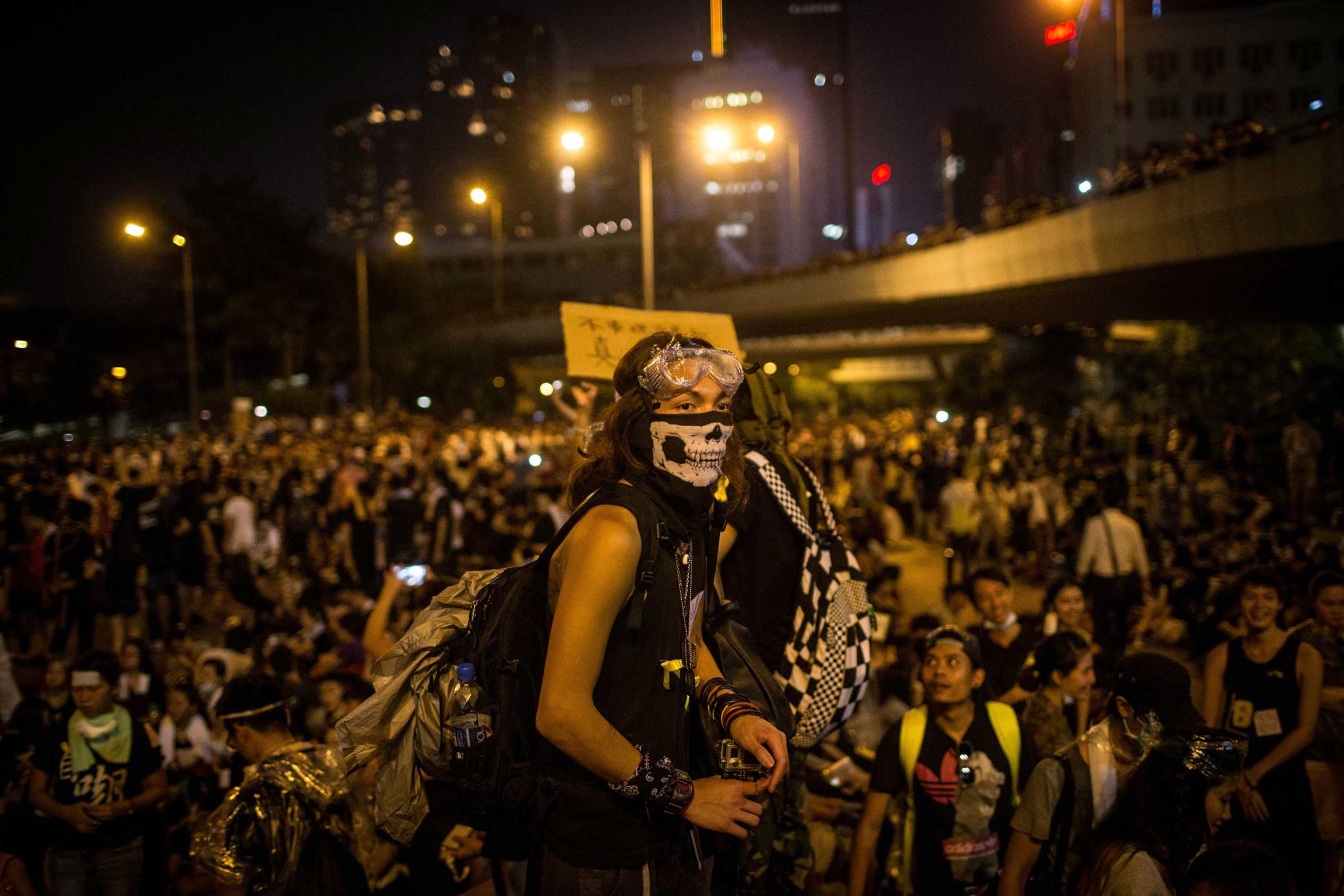
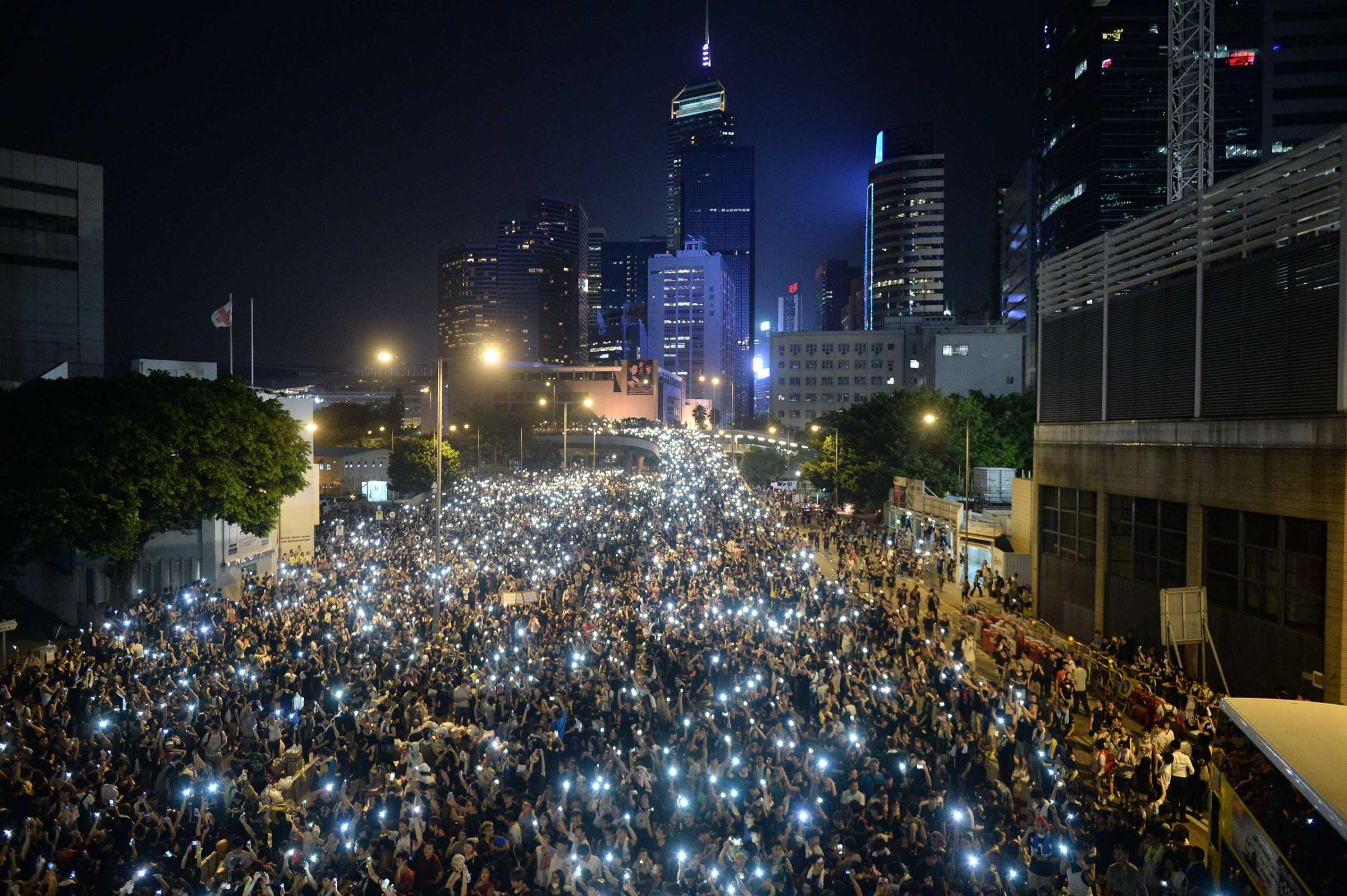

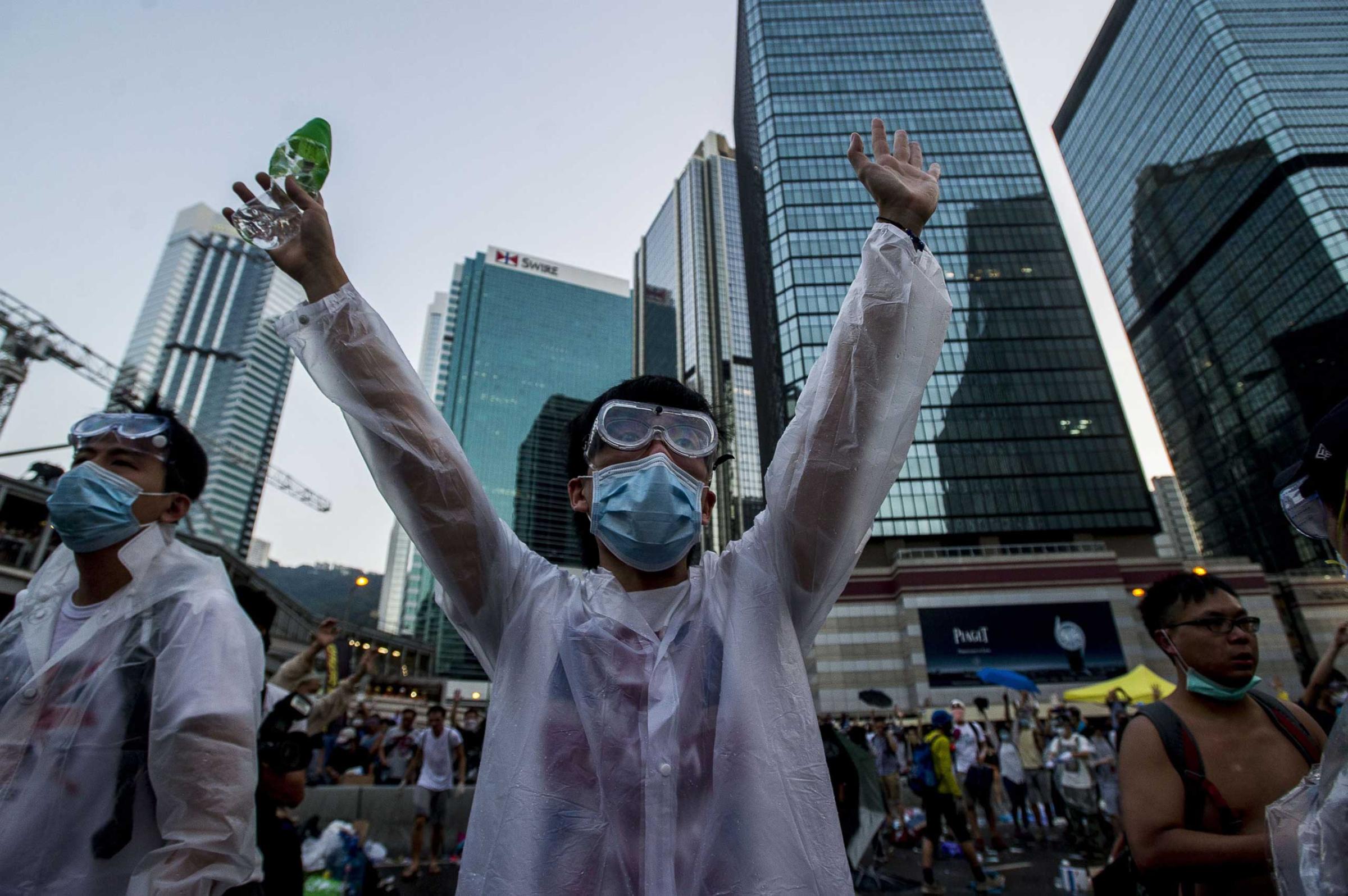
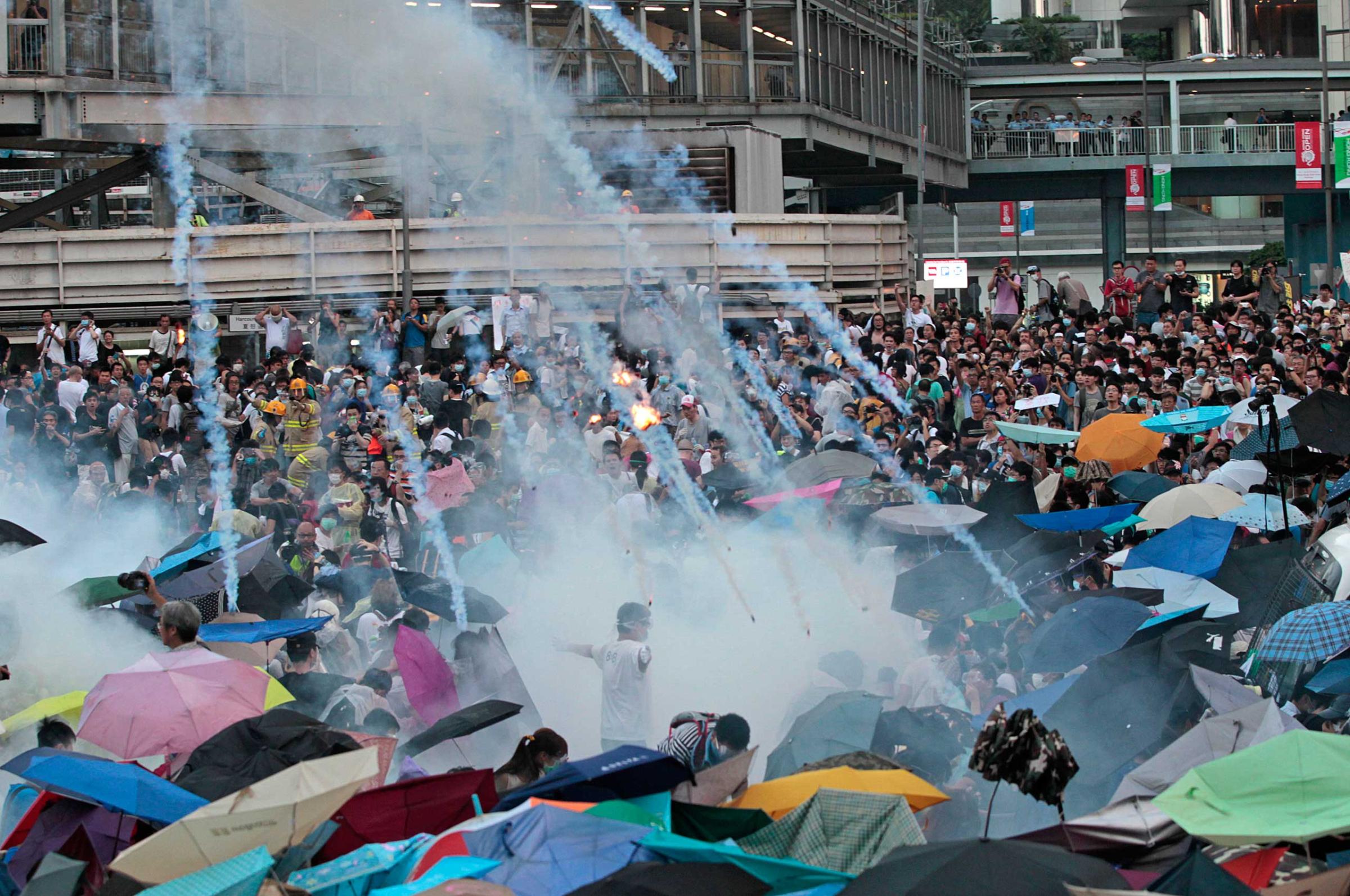
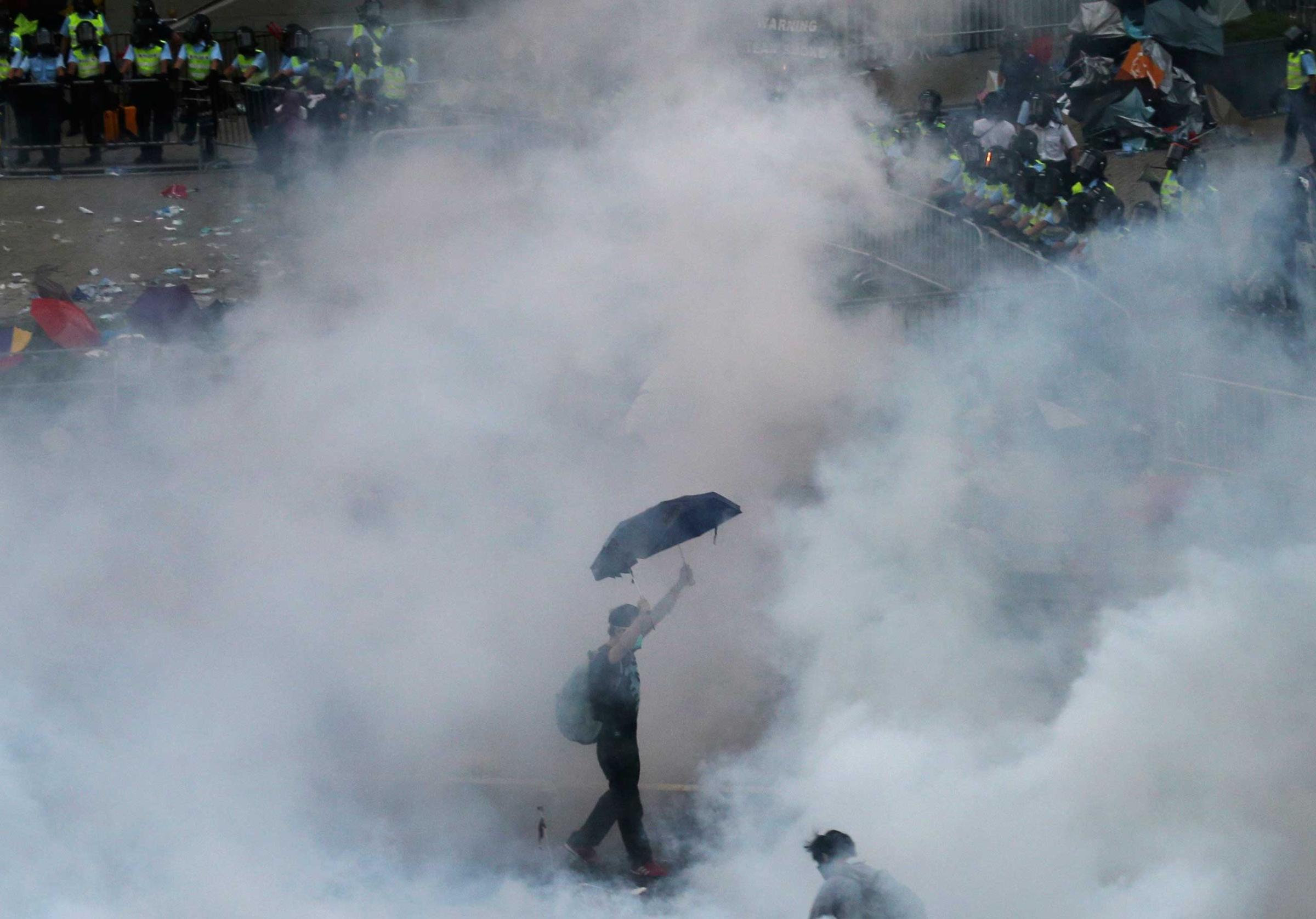
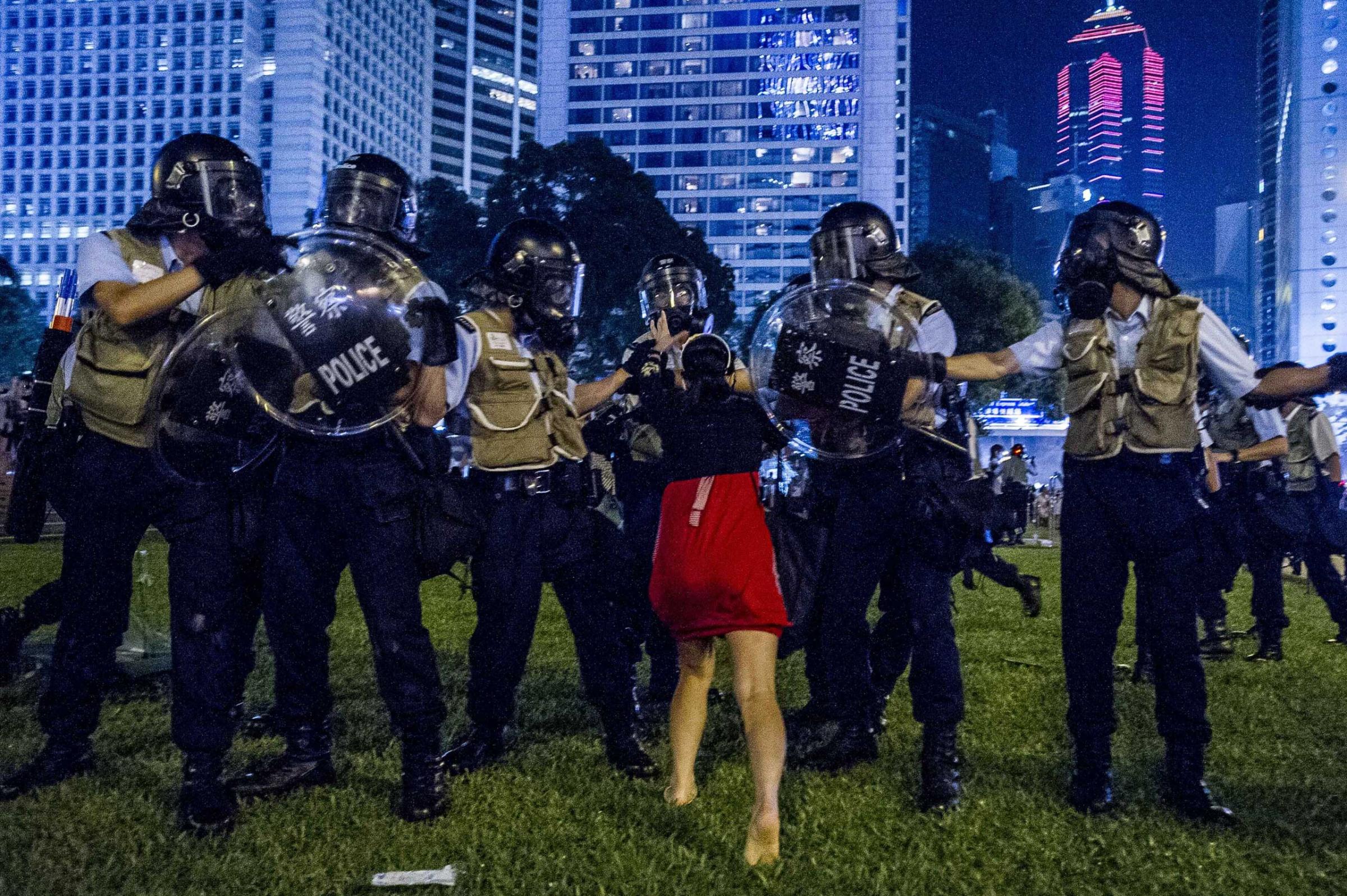
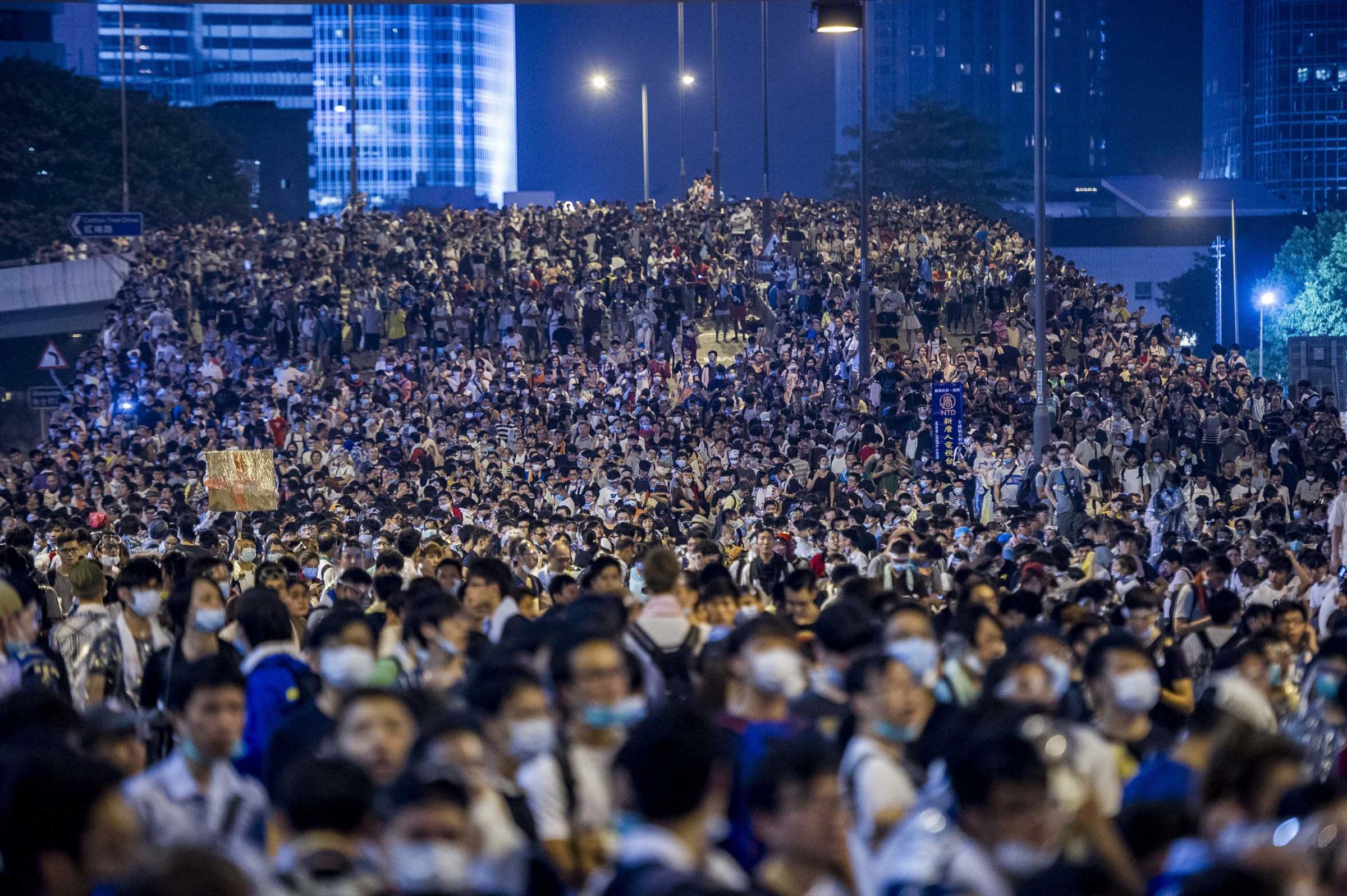




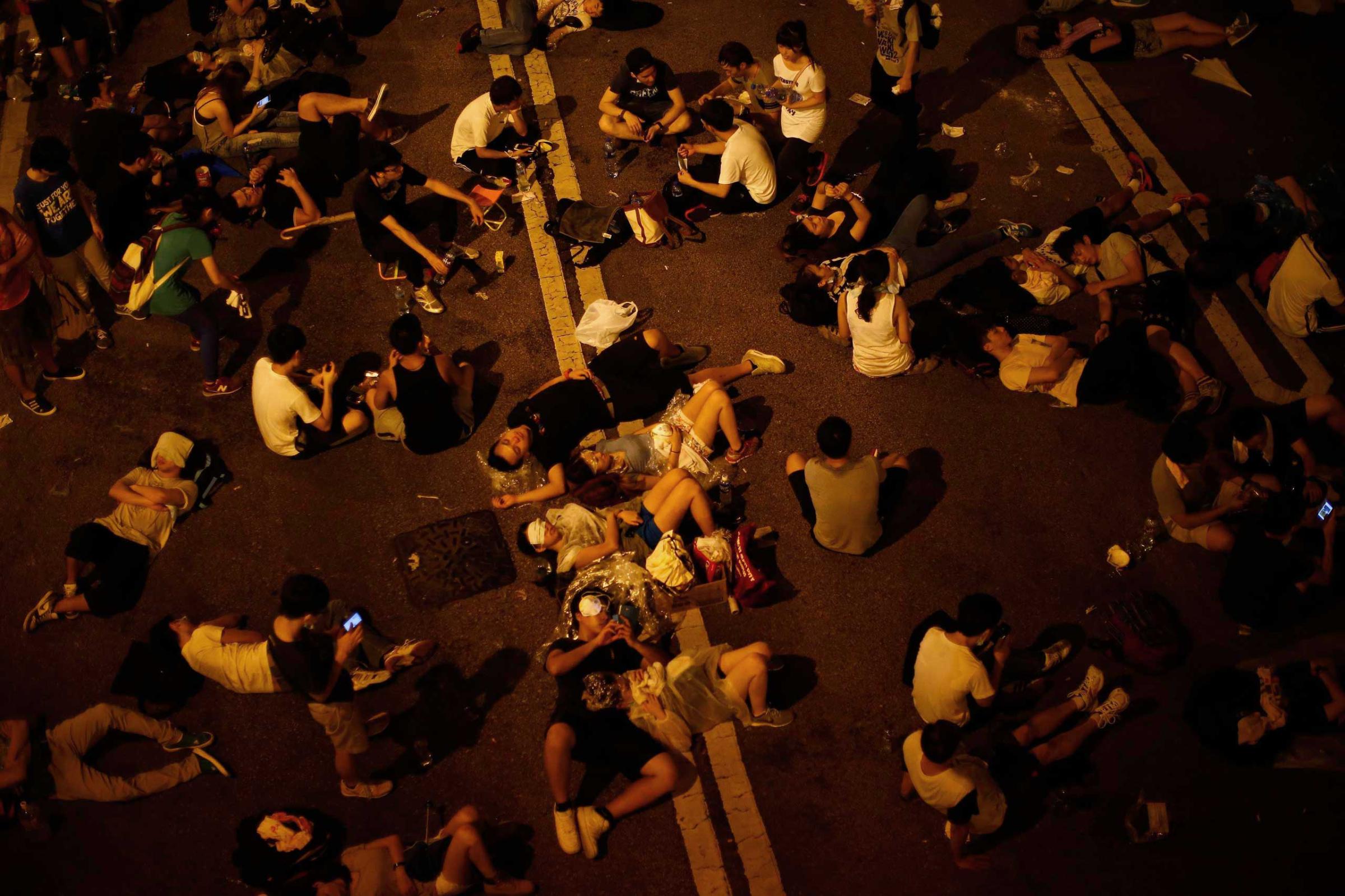
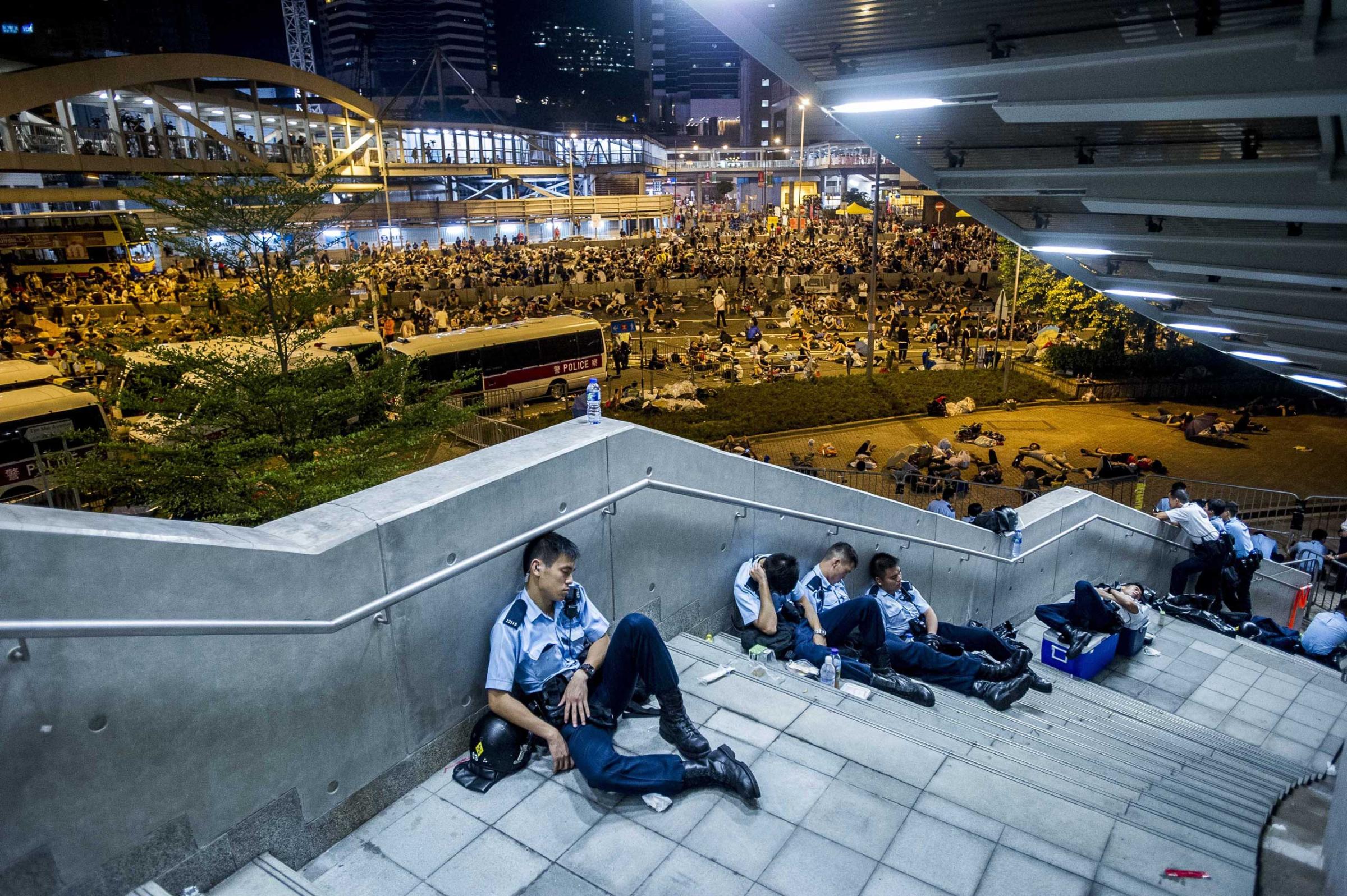
Alternate Universe
Three decades ago, when prime ministers Margaret Thatcher and Zhao Ziyang signed the Sino-British joint declaration setting the conditions for Hong Kong’s return to China in 1997, the then colony was considered an apolitical place, a striving city of businessmen and bankers who would obey whoever was in charge — as long as there was money to be made. Back then, it was communist China that was in the throes of political tumult. Five years later, tanks crushed the pro-democracy student protests at Tiananmen. Hundreds, if not thousands, of students and other peaceful demonstrators were massacred. Political passion was cauterized on the mainland, and the Chinese leadership learned the perils of allowing idealistic students to preach reform in public places.
Xi has used nationalism to argue for an even stronger central command. As China’s military chief, he has taken a more assertive stance on territorial disputes in regional waters, irritating China’s neighbors. Since assuming power in late 2012, Xi has also presided over a civil-liberties crackdown, detaining hundreds of human-rights defenders, from lawyers and bloggers to journalists and artists. He has shown no allergy to repression if it means protecting the party from the people. In September, Ilham Tohti, a moderate academic from the Uighur ethnic minority that populates Xinjiang, was handed a life sentence for separatism. His true crime? Calling on the Internet for China to respect its own regional autonomy laws.
Meanwhile, Hong Kong was busy finding its political voice. Each Tiananmen anniversary, tens of thousands gather for candlelight vigils in Hong Kong, the only place in China where such remembrances are allowed. In 2012 locals balked at a proposal to incorporate patriotic dogma into their education system; a protest movement actually succeeded in scrapping that school legislation.
At the same time, Hong Kongers discovered that their territory’s competitive advantages — unfettered courts, a vibrant press, financial transparency, a clean civil service and a welcoming attitude toward foreigners — were precisely what kept the enclave from becoming just another Chinese city. If Beijing threatened these core values, what were Hong Kong’s prospects? “Hong Kong is still unique, but we see the relentless downhill trajectory,” says Willy Lam, an adjunct professor at the Center for China Studies at the Chinese University of Hong Kong.
One Country, Two Systems
It’s easy, now, to track the seemingly inevitable collision course between Hong Kong and China, between these two vastly different systems trying to coexist in a single nation. Any attempt to narrow the gap looks clumsy. Leung Chun-ying, the unpopular, Beijing-backed Hong Kong chief executive, tried to bridge the disparity, amid calls for his resignation. “Hong Kong is a democracy within the context of ‘one country, two systems,’” he said on Sept. 28, before the pepper-spray charge began. “It is not a self-contained democracy.” Leung went on to characterize the chief-executive selection process as “not ideal, but it is better.”
Better isn’t good enough, particularly for the young generation that has taken to Hong Kong’s streets with the greatest numbers and the greatest passion. Like their counterparts on the mainland, these youths struggle with the realization that their material lives might not improve as expansively as their parents’ once did. Hong Kong’s prime method of wealth creation needs to diversify beyond real estate, just as the rest of China’s must. Housing prices have spiraled so high that ordinary young people in big cities must save their whole lives to afford their own homes.
Han Dongfang, a labor activist who was jailed for helping to organize the Tiananmen protests 25 years ago and who now lives in Hong Kong, says the territory’s young activists today “know more clearly what they want” than he did back when he was a youth leader. On Monday night, in the sweaty, swarming district of Mongkok, a 76-year-old tailor named To Fu-tat gave great consequence to Hong Kong’s students. “They’re the hope for China,” he said.
Yet student activists — no matter how much civility they display with their civil disobedience — are precisely what Beijing fears most. It is within the Chinese establishment’s political memory that the Tiananmen tragedy looms largest. Regina Ip was forced to resign as Hong Kong’s security chief in 2003 after half a million locals marched against the anti-subversion legislation she supported. Today she is a legislator heading the New People’s Party. “My own feeling is that the [Occupy] organizers have arranged the whole movement to replicate another Tiananmen incident in Hong Kong,” she says. “What about the interests of Hong Kong people like us? We want peace and stability. Issues … should be resolved through constructive dialogue not through street protests.”
Polls taken in Hong Kong show that a significant chunk — roughly half of the populace, by one estimate — is willing to accept Beijing’s electoral formula. Protests are bad for business and, for all the Tiananmen scaremongering, it’s hard to imagine Xi ordering Chinese troops to crack Hong Kong heads. Still, given his antipathy thus far toward political reform, it’s equally hard to see him ceding significant ground to Hong Kong’s democratic forces. Even the protesters themselves don’t imagine their full demands — both the resignation of CE Leung and true electoral freedom to choose the territory’s leader — will be met. “It’s very unlikely that Beijing will reverse its position,” says Audrey Eu, chair of the Civic Party, which has supported the Occupy movement. “But the people of Hong Kong must stand up and defend themselves.”
The Umbrella Revolution has already gained a wider significance. “People in China think Hong Kong belongs to China,” says Julian Lam, a 20-year-old student. “But people in Hong Kong think that Hong Kong is part of China but belongs to the world.” With each Hong Kong citizen who emerged, coughing and crying, to face another round of tear gas, a conviction grew: a quest for liberty is not, as the Chinese government charges, some Western-imposed frippery designed to undermine Beijing’s authority, but a universal aspiration. Let the umbrellas of the world unite.
— With reporting by Elizabeth Barber, Rishi Iyengar, Emily Rauhala and David Stout / Hong Kong
— Video by Helen Regan / Hong Kong
More Must-Reads from TIME
- Cybersecurity Experts Are Sounding the Alarm on DOGE
- Meet the 2025 Women of the Year
- The Harsh Truth About Disability Inclusion
- Why Do More Young Adults Have Cancer?
- Colman Domingo Leads With Radical Love
- How to Get Better at Doing Things Alone
- Michelle Zauner Stares Down the Darkness
Contact us at letters@time.com